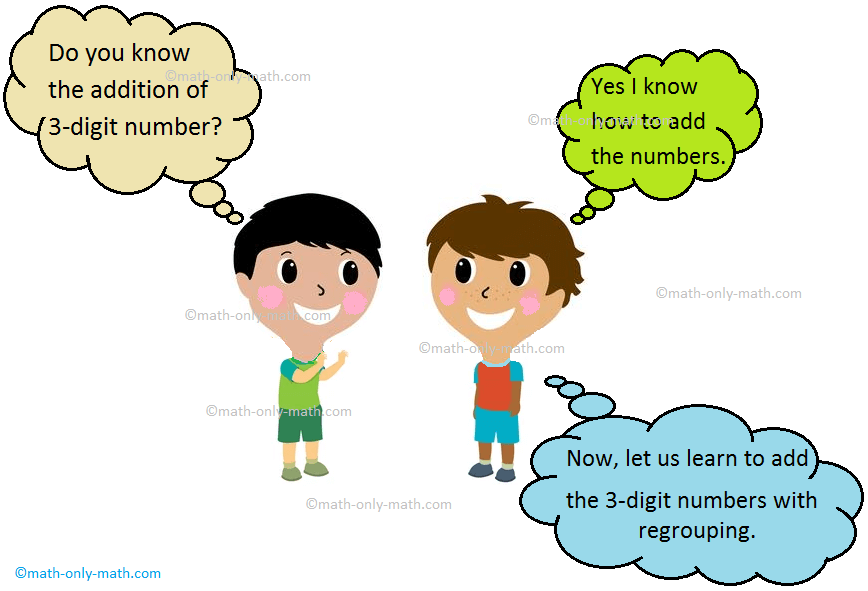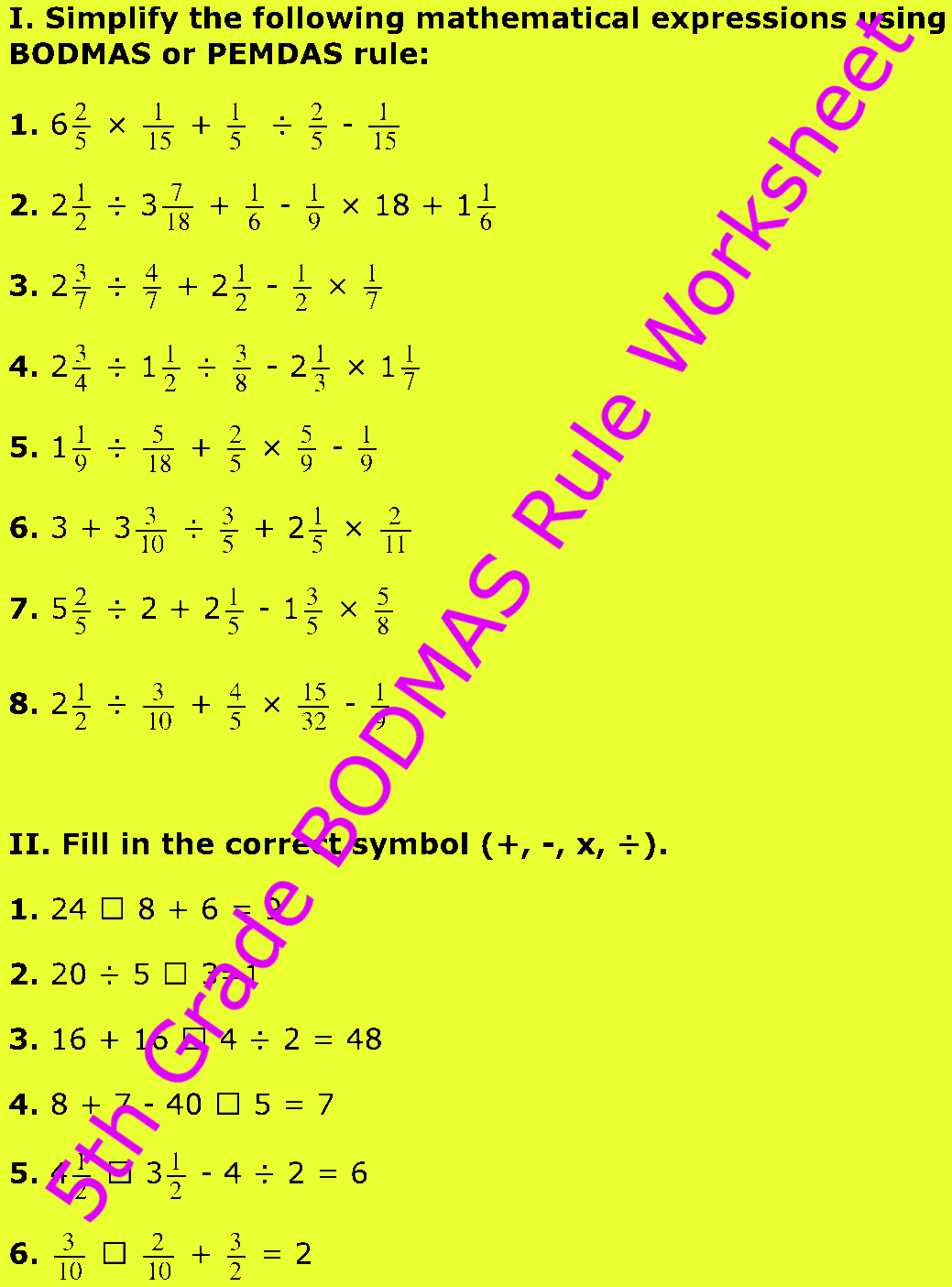Subtraction without Decomposition (2-Digit Number from 2-Digit Number)
In subtraction without Decomposition (2-digit number from 2-digit number) we will learn how to subtract the numbers that don’t involve decomposition (borrowing from the left hand column).
How to solve subtraction with no decomposition – Tens and Units?
Consider the following examples on subtraction without decomposition (2-digit number from 2-digit number). Step-by-step we will learn subtracting two numbers without borrowing.
1. Subtract 15 from 69.
(i) Arrange the two numbers, one number should be written above the other number as shown.
69
-15
(ii) When subtracting one number from the other number, we
start counting the units or ones place in the right side column and then move
on to the tens place in the left side column. In each column the top number is
bigger than the bottom number; we subtract the bottom number from the top
number and write the result below. In this sum, we can subtract 5 from 9 in the
units place column (9 - 5 = 4) to get 4 as shown.
69
-15
4
(iii) Now we move along to the tens column to subtract the ten’s place numbers and subtract 1 from 6 to get 5 as shown.
69
-15
54
(iv) The difference of 69 - 15 = 54
2. Subtract 25 from 56.
(i) Arrange the two numbers, one number should be written above the other number as shown.
56
-25
(ii) When subtracting one number from the other number, we start counting the units or ones place in the right side column and then move on to the tens place in the left side column. In each column the top number is bigger than the bottom number; we subtract the bottom number from the top number and write the result below. In this sum, we can subtract 5 from 6 in the units place column (6 - 5 = 1) to get 1 as shown.
56
-25
1
(iii) Now we move along to the tens column to subtract the ten’s place numbers and subtract 2 from 5 to get 3 as shown.
56
-25
31
(iv) The difference of 56 - 25 = 31
From Subtraction without Decomposition to HOME PAGE
Didn't find what you were looking for? Or want to know more information about Math Only Math. Use this Google Search to find what you need.
Recent Articles
-
Addition of 3-Digit Numbers with Regrouping | Step-by-Step Method
Apr 07, 25 02:53 AM
We will learn addition of 3-digit numbers with regrouping. Do you know the addition of 3-digit number? Yes I know how to add the numbers. Now, let us learn to add the 3-digit numbers with regrouping. -
Worksheet on Fractions | Questions on Fractions | Representation | Ans
Apr 07, 25 02:37 AM
In worksheet on fractions, all grade students can practice the questions on fractions on a whole number and also on representation of a fraction. This exercise sheet on fractions can be practiced -
Counting Numbers from 1 to 50 | Match the Number | Missing Numbers
Apr 04, 25 03:46 PM
In counting numbers from 1 to 50, recognize the numbers, count and then join the numbers in the correct number order. Here we mainly need eye-hand coordination to draw the picture and maintain the num -
Counting Eleven to Twenty with Numbers and Words |Numbers from 11 - 20
Apr 04, 25 03:21 PM
Counting eleven to twenty with numbers and words are explained below. One ten and one more is eleven. Eleven comes after ten. One ten and two more is twelve. Twelve comes after eleven. -
5th Grade BODMAS Rule Worksheet | PEMDAS | Order of operations|Answers
Apr 03, 25 03:11 PM
In 5th Grade BODMAS Rule Worksheet you will get different types of problems on mathematical expressions involving different operations, mathematical expression with 'brackets' and 'of' and simplifying…





New! Comments
Have your say about what you just read! Leave me a comment in the box below. Ask a Question or Answer a Question.